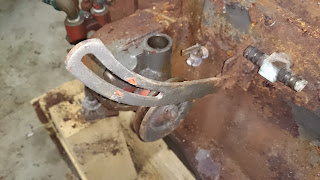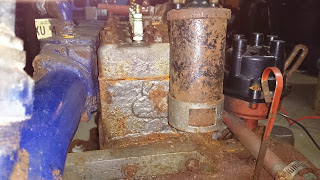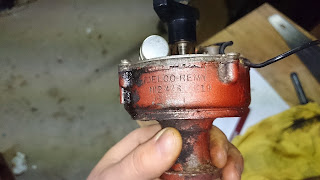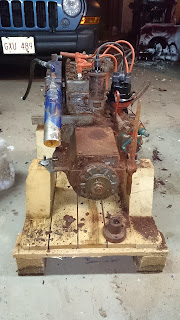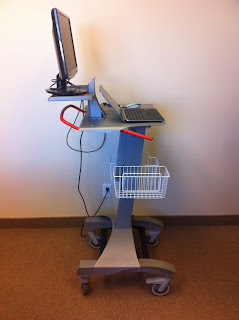 |
| SI-TEX Radar with Standard Horizon CP190i Chartplotter |
Living and boating on/near the
Bay of Fundy means that fog is a regular problem. With this in mind, I have been looking to purchase a radar system for the last couple of years.
Neither Kijiji nor eBay offered me any real bargains in my hunt so this winter I got serious about the search and looking for new units.
Current Setup
My current electronics are very simple, yet effective. I have an old Magellan 315 handheld GPS, supplemented by an iPhone 4 with charting apps (Navionics). My depth finder is a vintage SeaFarer 3 that looks like something from an old James Bond movie.
This setup isn't fancy but has proven very effective.
Criteria for Radar Given the success of my current setup my only real criteria for a new radar system was...well...that it does radar! A few other criteria that factored in:
- Inexpensive - The new system should be worth less than the boat floating it
- Relatively small dome
- Relatively small display that will fit in my available bulkhead space
- Options for charting (Not mandatory)
- Options for adding depth sounder (Not mandatory)
The options
I soon realized that a single purpose radar screen, while available, isn't very cost effective. For a small amount more a chartplotter can be included and offers many more features. I quickly changed tack to focus on chartplotter integrated options only.
Each of the main manufacturers have similar offerings for chartplotters. They range from simple units to high-end large display units with tight integration with...everything. Of course each does there thing in their own proprietary method (I'll save that rant for another day).
For radar domes there are a few options but basically it comes down to the High Definition/Broadband options or standard models. Within each category you can choose between low-end systems with limited range or higher-end devices with longer range and better overall performance.
The Decision
I was VERY tempted to buy some of the higher end units. There are all kinds of features that are available for "just a couple hundred more". Looking at each unit and the next one up ...and the next one up, it is easy to get pulled into the cool features of the more expensive units.
In the end I dug deep and really analyzed my requirements. When it comes down to it, I expect to be out on the Bay [perhaps] 2 weeks a year. The rest is on the protected Saint John River system. Of those days on the Bay, only a few will be foggy and usually I would just wait out the fog at anchor.
Do I really need all of the extra features for that minimal amount of usage?
Also, I really don't have a great desire to install windmeters, fuel indicators, water level gauges or other electronics that would tie into a chartplotter. So the integration piece isn't important to me.
My final choice was to keep it simple, keep it cheap and go with a SI-TEX MDS-1 dome with a Standard Horizon CP190i chartplotter. This is about as basic as it gets for a chartplotter/radar combo.
I did a LOT of price comparison. I shopped around and compared prices at practically every online vendor in North America. I really expected that Amazon, Overtons or another large US retailer would be cheapest. In the end I purchased the unit from the local Halifax merchant
The Binnacle. Their prices were second to none since the unit was on sale and since they offer free shipping. They have also consistently given me stellar service. In the end $1807 (including tax) got me my new toy.
The success of my plotter choice should clarify over the coming year. I will include details of my installation as well as my review of the product choices as I use them.
If you have opinions about these units, boat electronics...or anything else, please leave a comment.




